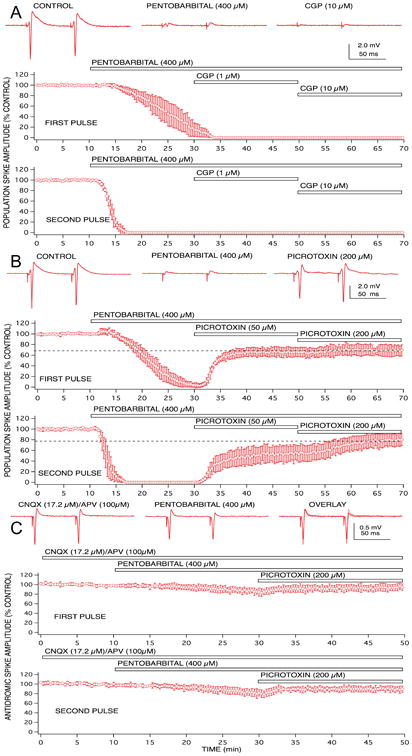Figure 4.

Population spike depression produced by pentobarbital was partially mediated by enhanced GABAA receptor gated chloride channels, but GABAB receptors and non-synaptic effects did not appear to play any role. A concentration of 400 μM pentobarbital was sufficient to produce complete depression of first and second pulse population spike responses. The GABAA receptor antagonist, bicuculline partially reversed the depression for both paired pulse responses (A). The GABAB receptor antagonist, CGP 35348 did not reverse any of the pentobarbital-induced depression, even in the presence of supra-maximally effective concentrations of the antagonist (10 μM; B). The chloride channel blocker, picrotoxin, produced a similar – but not identical – degree of reversal of the pentobarbital-induced depression of population spike responses (C). Changes in postsynaptic excitability of CA1 neurons did not appear to play a major role in the pentobarbital-induced depression, since only a small depression of antidromically-evoked population spike responses was evident at concentrations that produced complete depression of orthodromically-evoked responses (D), and all of this depression was reversed by picrotoxin. Symbols represent the mean ± SD for at least five time matched experiments from separate brain slices.
